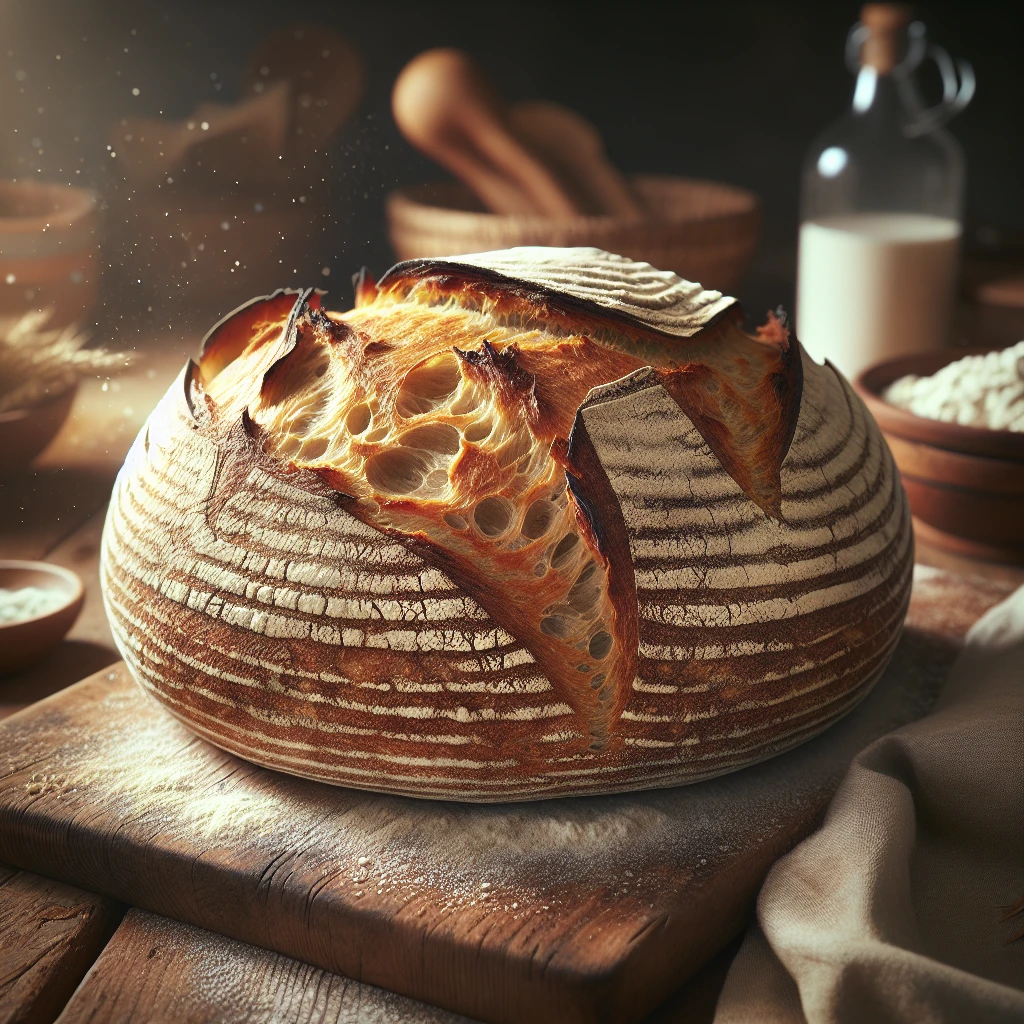
Welcome to the world of artisan sourdough bread! This recipe is your ticket to that chewy interior and crispy crust that's so revered among bread aficionados. With just a few basic ingredients and some patience, you'll be enjoying homemade sourdough that's perfect for any occasion.
Flour is the backbone of our bread, providing structure and forming the gluten network needed for that lovely chewy texture. We’re using all-purpose flour for its versatility and accessibility.
The sourdough starter is our natural leavening agent. It's full of wild yeast and bacteria that give the bread its signature tang and lift.
Water is not just a liquid here; it helps develop gluten and hydrates the flour, contributing to the dough's elasticity.
Salt isn't just for taste; it also regulates yeast activity and strengthens gluten, ensuring a well-structured loaf.
This sourdough pairs beautifully with a good olive oil and balsamic vinegar dip. It's also fantastic for sandwiches, especially when loaded with fresh veggies and a swipe of hummus. For breakfast, try it toasted with a generous spread of avocado and a sprinkle of sea salt.
First, grab a large bowl and mix the flour, sourdough starter, and water. It’s going to look a bit shaggy at first, but that's normal. Just make sure everything is combined. Once mixed, cover the bowl with a damp cloth and let it rest for 30 minutes. This resting period, or autolyse, allows the flour to fully absorb the water and kickstarts gluten development.
After resting, sprinkle the salt over the dough. Now comes the fun part: kneading. Turn the dough onto a floured surface and knead for about 10 minutes. You're looking for a smooth, elastic texture. If it starts sticking to your hands, dust a little more flour on your surface, but try not to add too much.
Once kneaded, place the dough in a lightly oiled bowl. Cover it and let it rise at room temperature for 4 to 5 hours, or until it’s doubled in size. Patience is key here, but it’s worth the wait!
When your dough has risen beautifully, preheat your oven to 450°F (232°C) with your Dutch oven inside. This ensures both the pot and the oven are hot enough to create that perfect crust.
Shape the dough into a round loaf. You can do this by gently folding the edges into the center, creating tension on the surface of the dough. Place it onto a piece of parchment paper and let it rise again for about 30 minutes.
Carefully transfer the dough with the parchment paper into the preheated Dutch oven. This part can be a bit tricky, so take your time. Cover the pot and bake for 20 minutes. Then, remove the lid and continue baking for another 20 to 25 minutes until the crust is deep golden brown.
Finally, let your bread cool on a wire rack before slicing. This step is crucial as it allows the interior to set properly.